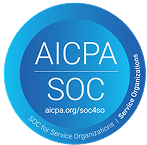Education loans: U.S. vs. Canada – Which offers better terms for Nepali students?
For Nepali students comparing study abroad options, the choice often comes down to two destinations: the United States or Canada. Both offer top-ranked universities and international work opportunities. But there’s one factor that can make or break your plans – how you will pay for it.
Many students assume Canadian education is more affordable than U.S. education. While that can be true in terms of tuition, the real cost depends on more than just sticker price. The availability of private education loans, repayment terms and the ability to work during or after your program can all affect the financial outcome.
This article compares how education loans for Nepali students differ between the U.S. and Canada and which option may offer better overall terms based on your goals.
Tuition and living costs: Canada vs. the U.S.
At first glance, Canadian universities tend to be cheaper than U.S. universities, especially for postgraduate programs. But living costs, program length and funding options must also be factored in.
|
Category |
Canada |
United States |
|
Tuition |
CA$15,000 to CA$35,000+ per year |
US$20,000 to US$70,000+ per year |
|
Program length |
Usually one to two years (varies by program) |
Usually one to two years(varies by program) |
|
Living costs |
Generally lower; varies by city |
Often higher in major metro areas |
|
Health insurance |
Included in most university fees |
Typically purchased separately |
|
Currency impact |
More stable against Nepali rupee |
Stronger dollar may increase cost |
While Canada may offer lower upfront costs, the U.S. may allow you to enter the job market sooner because of shorter program timelines. That can reduce your overall cost of living and allow faster loan repayment.
International student loan options in each country for Nepali students
Nepali students often find it difficult to get large overseas education loans from banks in Nepal unless they have property to pledge or a family member who can cosign. That makes international loan options essential.
United States, what’s typical
- Private, school-certified lenders set limits up to the cost of attendance.
- Coverage often includes tuition, fees, housing, meals, books and travel.
- Repayment options vary by lender and may include deferred (no payments while in school), fixed, small in-school payments, or interest-only payments.
- Most lenders require a U.S. citizen or permanent resident cosigner.
- A few no-cosigner options with narrower availability exist at eligible schools.
Canada, what’s typical
- Borrowing is primarily through bank student lines of credit.
- Many banks require a Canadian citizen or permanent resident cosigner.
- Funds are drawn as needed for tuition, fees, and living costs, in Canadian dollars.
- In-school payments are typically interest-only, with principal and interest after graduation.
- A few no-cosigner options exist with more limited coverage, often tuition only.
In both countries, no-cosigner student loans are typically limited to students attending approved universities and pursuing full-time postgraduate degrees.
How MPOWER Financing supports Nepali students in both countries
MPOWER Financing offers no-cosigner loans for eligible Nepali students studying in both the U.S. and Canada. These loans are designed to provide a simpler, more transparent path to funding your education, even if you don’t have collateral or a cosigner.
What is the same
- No collateral or cosigner
- Interest-only payments while in school, then a grace period after graduation
- Fixed rates, no prepayment penalties, funds disbursed to the university
- Available to students only at eligible schools and in full-time programs
Key differences
United States
- What is covered: Tuition and fees plus many school-certified living costs such as housing, meals, books, transportation and health insurance
- Path and time to work: Optional practical training (OPT) after graduation, with employment starting once work authorization is approved; some STEM programs allow an extension
Canada
- What is covered: Tuition and university-invoiced charges; living expenses are generally not covered
- Path and time to work: Post-graduation work permit (PGWP) after graduation, with timing and permit length tied to program length
MPOWER works with students at more than 500 universities across both countries. Whether your priority is cost, career growth or long-term immigration options, MPOWER can help you build a funding plan that works on your terms.
Visa and work options that affect student loan repayment
A key part of comparing loan terms and student loan types is understanding how you’ll earn money to repay them. That depends heavily on visa rules.
In the U.S.:
- During studies: F-1 visa allows part-time work on campus, up to 20 hours per week.
- After graduation: Optional practical training (OPT) gives up to 12 months of work time, or 36 months for STEM fields.
- H-1B sponsorship: Competitive but possible after OPT.
- Loan repayment: Easier if you secure U.S. income during OPT.
In Canada:
- During studies: Up to 24 hours of work per week with study permit
- After graduation: Post-graduation work permit (PGWP) of up to three years
- Path to permanent residency: Clearer for many students through Express Entry or Provincial Nominee Program (PNP)
- Loan repayment: May be more flexible with Permanent Resident status
Navigating visa and work options is just as important as comparing student loan terms, since your ability to earn directly impacts how smoothly you can repay. By understanding the work pathways in the U.S. and Canada, you can better plan not only your career trajectory but also your financial stability after graduation.

